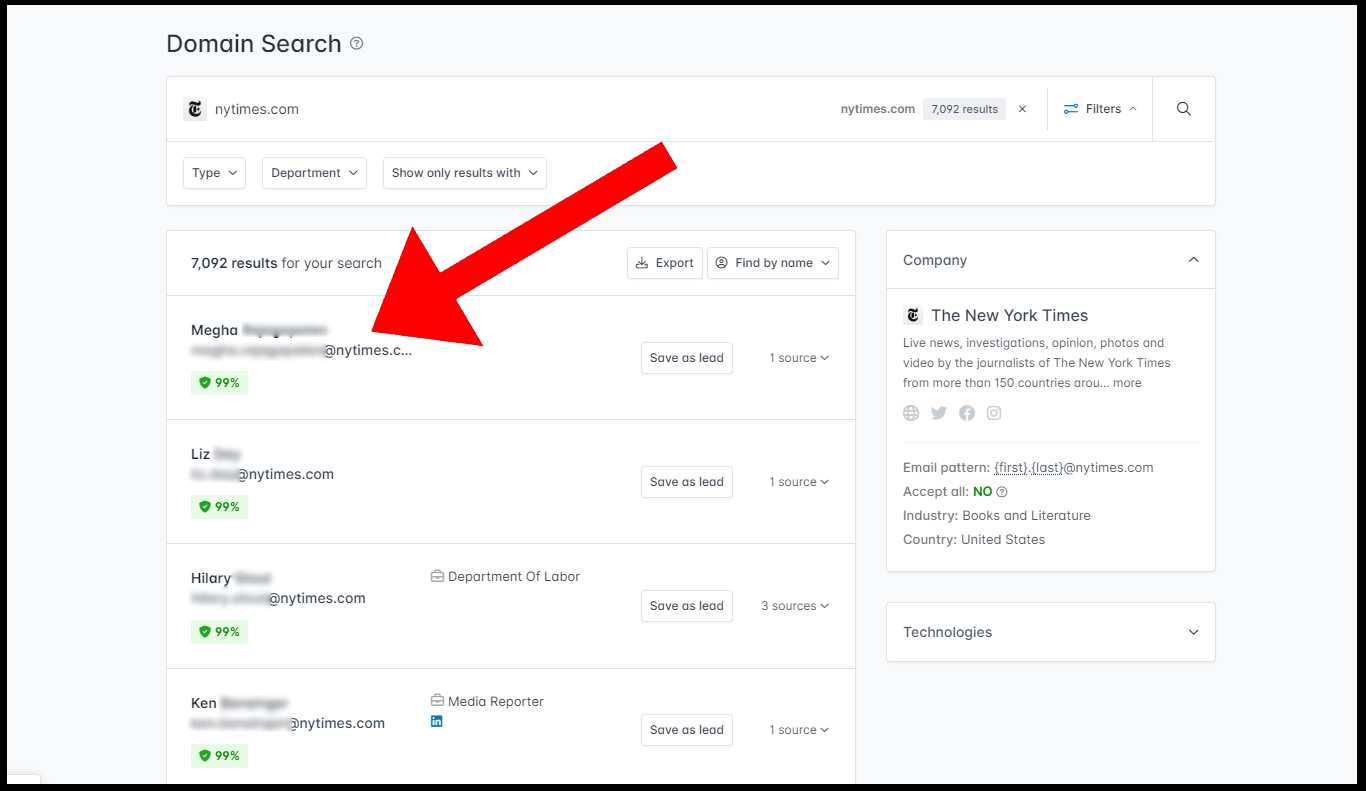
When you’re just starting with your search engine optimization strategy, one of the easiest ways to get a sense of direction is to look at your competitors. After all, good artists copy and great artists steal, right?
Today, we’ll show you how to find your competitors’ backlinks, analyze them and use the findings to build new backlinks of your own.
Let’s get started.
Why use competitor backlink analysis?
If you’re looking to outperform your competitors in the game of SEO and don’t know where to start, it’s best to begin with the low-hanging fruit. If your competitor has done any SEO work, it means that they built at least some backlinks in the past. This allows you to learn their strategies, copy them and eventually outperform them.
By far, the biggest benefit of this strategy is that it is completely transparent. Using a tool such as Ahrefs, you can easily find out what a backlink profile looks like for any website that exists today.
Second, there are readily available link building tools such as the aforementioned Ahrefs or SEMRush that allow anyone to find a competitor’s backlinks, even without any knowledge of SEO or digital marketing.
Last but not least, it is probably the least technically difficult of all the link building methods out there. If you’re just starting out with building links on your own, it’s the perfect way to do a lot with not much experience.
How to find competitor backlinks
Since we use Ahrefs for our business, we’re going to show you a step-by-step process for finding competitor backlinks in this tool. Once you get an Ahrefs subscription, simply load up your competitor(s) in the Site Explorer and you’ll get an overview of your competitor’s backlink profile.
Finding SEO competitor backlinks on the domain level

For illustration purposes, we’re going to pretend we’re a competitor of Canva, which is largely regarded as one of the most successful SaaS websites in terms of SEO.
This is what the overview of their SEO efforts looks like:

As you can see, over 15 million backlinks, so quite a lot to go through. To get started with your research, simply click on the number of backlinks, or in this case, 15.8M. This will give you an overview of all the backlinks pointing to this website:

You can now filter them according to various criteria. For example, you can choose dofollow links to narrow down your criteria and research scope. You can sort by the type of backlink:

And if you want to get into even further detail, you can search the backlink profile according to the domain rating and domain traffic. While the latter is pretty self-explanatory, domain rating is a score from 0-100 given by Ahrefs. The bigger the DR, generally the stronger the website and the more attractive it is as a target to get links from.
Last but not least, you can enter a search term to find websites linking back to Canva by using these fields:

This allows you to choose the domain name as well as any other criteria for link placement, such as anchor text, for example. In our case, we typed in Forbes.com as we want to find out if Forbes ever linked to Canva. And indeed they did, multiple times:

As you can see from the results, you get a ton of valuable info from this feature in Ahrefs. You can see the page where a competitor got a link from, the domain rating, the number of referring and linked domains, external links, page traffic, anchor and target URL, and much more.
Armed with this knowledge, you can reach out to these websites that are linked to a competitor as there is a high likelihood that they will link to you too, with a bit of persuasion and good luck.
However, this is not the only way to find competitor backlinks.
Finding competitor backlinks on the keyword level
Perhaps you have your eyes on a specific keyword you want to rank for and you want to find out which pages rank for it already. Moreover, you want to find out who is linking to these pages that are ranking well for your favorite target keywords.
Also – if you want to rank a specific page for a specific keyword, that page needs to have quality backlinks pointing to it. The more important the page, the better the backlinks should be, and the more of them you should build.
Ok, maybe that sounds complicated, so here’s an example.
You want to rank for a competitive term, such as “graph maker”. You want to take a look at the top results in search engines for this keyword. Then, look at websites linking to these graph maker pages. Chances are, if they linked to these top results, they will link to you too.
Using Ahrefs, go to keyword explorer and type “graph maker” in the search bar. You want to choose Google as your preferred engine.

Hit the magnifying glass and you’re ready to get started. This is what the results look like:

This is just the very beginning of the research and you can see that this is a very hard keyword to rank for with lots of search volume. Moreover, you’re going to need a lot of backlinks (183) to rank in the top 10, as estimated by Ahrefs. Now, let’s take a look at the top 10 search results – you can find the list at the very bottom of this page.

These are the top 10 search results for this keyword in the United States at the moment of writing. There’s lots of data to sift through and we’re primarily interested in the “Backlinks” column. You can see that the top result is from Canva and it has 1,770 backlinks at the moment of writing.
So, let’s click on the number 1,770 and see the websites that link to Canva’s page:

Many of these websites would be a good potential target to reach out to and ask for a link. Since they are already linked to one graph maker page, they are likely to link to another one in the future. Of course, you can arrange and sort these according to the same criteria mentioned above.
This is not a silver bullet but it is an excellent starting point. Play with the list of backlinks and sort them according to different criteria such as DR to find different websites to reach out to.
Remember, Ahrefs is a great tool we recommend but you can also use another backlink checker tool for the same purpose.
Analyzing your competitor backlinks
All the work so far has been just scratching the surface. Now we get to the heart of competitor backlink strategy – analyzing backlinks. If a website has 911 backlinks pointing to a page, it does not mean that each competitor link is good. The next part of the work is determining which links are worth your time or in other words, which websites you want to get a link from as well.
To start with the analysis, let’s take a look at our key metrics.
Key link metrics to focus on
Every SEO has different standards for what makes good inbound links. However, these are some great starting points to go from and determine if a competitor’s link is worth replicating. Google doesn’t tell us exactly what they use for ranking factors, but they’re great pointers for your search optimization efforts.
Domain rating
As discussed above, you can find it in Ahrefs. The larger the domain rating of a website you’re getting a link from, the better. Ideally, you want to get links from websites with a 30+ domain rating.
Domain authority
This metric is not used so widely today as domain rating but it is still relevant. It is practically the same thing but you use a tool called MOZ to check it. Aim for websites with a 40+ domain authority.
Website relevance
Getting a link from a software review website like G2 to your graph maker page is pretty great. However, getting a link from a sports apparel website to a graph maker page – not so much. Check if the website the competitor got a link from is relevant to your industry, niche, and specific page you’re building links to.
Website traffic
If the website you’re getting a link from has a high domain rating and plenty of backlinks but has no traffic, something is off. There’s a high chance you’re dealing with a PBN or a link building scheme. To be on the safe side, go for websites that have at least a few thousand visits per month, as estimated by Ahrefs.
Dofollow and nofollow backlinks
Dofollow links are “counted” as valuable for search engines such as Google. When researching a page, you want to make sure that most of the links coming to it are dofollow rather than nofollow.
Key items to avoid
Not all websites go by the book and you’ll find quite a few of them dealing with shady link building tactics. There are some things you want to avoid at all costs when researching competitor backlinks to copy. We’ll show you some of the key things to avoid when building backlinks because doing any of these could result in a penalty from Google and getting your website to fully disappear from search engine results.
Perhaps the best-case scenario (which is still pretty bad) is that your links will be ignored by search engines such as Google. As a result, you waste your time and money.
Websites that publicly state they sell links
If you can read that a website is openly selling links, so can anyone else. And how good is a link that anyone can pay for and build to their website? Moreover, if you can read that a website is selling links, so can someone from Google. In other words, it’s a quick way to get a penalty.
Links from free blog site domain names
Blogspot, Weebly, Squarespace, and other free domain names won’t look great in your link profile. Anyone can create a free website on these platforms and links from them are not worth all that much for your performance in the SERPs.
Forums
Most forum links are nofollow by default, which makes these referring domains low in value. Anyone can place a link in a forum, so these links aren’t really that valuable.
Wiki pages
Anyone can make a wiki page. Are you starting to see a pattern here? While a link from a wiki page sounds great, these backlink opportunities are better left untouched.
Non-English websites
If you’re competing in an English-speaking market, aim to get backlinks from other English websites. This is not to say that a link from a Dutch website is not useful, for example, but if you’re actively building links, pursue those primarily from English websites instead.
Websites with content that is not safe for work
Think of things you wouldn’t want your kids or your mom to see on your screen. That’s the kind of website you don’t want to get a link from: porn, gambling, any type of drugs, violence… Steer clear of these websites for link building.
How to quickly review websites to get links from
Now that you have all the knowledge, finding the websites you want a link from is easy with your favorite SEO tool. Let’s return to the backlink data for “graph maker” again.

We’ve selected the following criteria:
- Regular links
- Dofollow only
- DR30+
- English websites only
And just with this handful of criteria, we dwindled down the original 1,770 links to just 130 links to research and get backlinks from.
At this point, you can do some more research in Ahrefs (or another backlink analysis tool) or simply export this data to an Excel sheet or a CSV file. Once you do that, you can manually analyze the different metrics even more closely and shorten your list to something manageable for the next step of the process.
Link building strategies for competitor backlinks
Now comes the most difficult and least predictable part of competitor backlink building – the actual link building. There are a few tactics you can employ to get similar links as your competing domains.
Guest posting
The oldest tactic in the content marketing and SEO book. Pitch the editor of the target website with an article you want to write for them and within that article, link to your website with your desired link and anchor. Contrary to popular belief, it still works in 2023 very well.
Broken link building
If you have a list of links that one website is pointing to, your link analysis can show you how many of those links are broken. No website wants to have a broken link leading from it, so you can pitch someone managing the website and offer to replace the broken link with yours.
You can find these broken link opportunities in Ahrefs as well.
Skyscraper content
Originally attributed to Brian Dean of Backlinko, this is a powerful SEO strategy. Skyscraper implies how “tall” your content is – do some keyword research, pick a keyword and build a skyscraper – the best piece of content on this keyword. This tactic can work well if you have the time and resources to pull it through. Also, nothing guarantees that your skyscraper content will rank well.
Resource pages
A resource is something that readers, writers, and the general public find valuable. For example, here is an article on email marketing statistics by Oberlo. This is a valuable resource for others and the best part is, Oberlo just gathered other people’s research in one place. They can now offer this resource to anyone quoting outdated email marketing statistics from previous years.
Setting up alerts for new competitor backlinks
Ahrefs has a feature that notifies you for new backlinks to a website. But it doesn’t have to be your website – it can be any number of competitor websites. You’ll get an email with new backlinks so you can reach out to those same websites and strike while the iron is hot.
How to build links based on this information
To get backlinks from the same places as your competitors, you need to reach out to these websites and ask if they would like to add your link. This only seems hard but in reality, it’s not that complicated.
A great starting point is finding a list of people who work at a certain company which you want to get a link from. LinkedIn should be of great help here. Look for people with the title of editor, content marketing manager, head of content, website manager, or similar.
Once you know your point of contact, use a tool such as Hunter.io to find the email address of this contact. Connecting with them beforehand on social media is also a pretty decent idea.

Now is the time to reach out and send a cold email and do some outreach.
Send them a message telling them that you loved their blog and that you noticed a link to your competitor there. And since your piece of content is better/more recent/provides more value/has more research, you want to ask for a link as well.
While there are some nuances to the process, these are the basics. One email is rarely enough, so make sure to follow up a few times until you get a positive reply from the recipient.
Wrapping up
Building links through competitor analysis is a superb starting point for anyone new to the world of SEO and climbing search rankings. However, it goes beyond creating simple lists of backlink competitors.
If you don’t want to go through all the hard work on your own, let the professionals take care of it. Besides competitor backlinks, we employ a wide range of SEO and link building services to build you genuine, white-hat links that deliver results.
Book a free call today to find out how we can help you with your link building needs.



